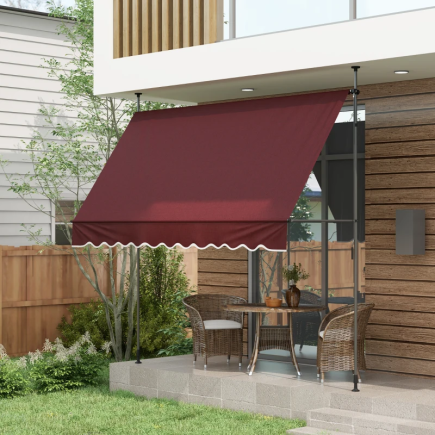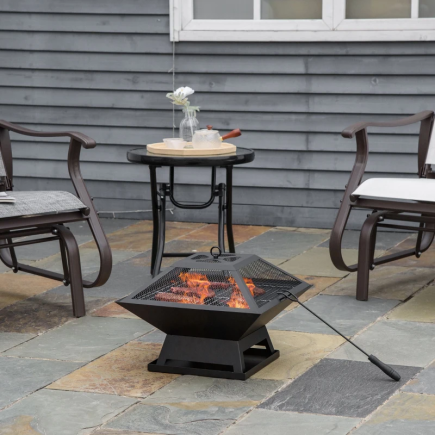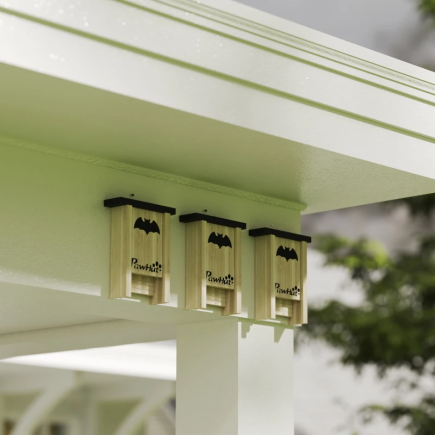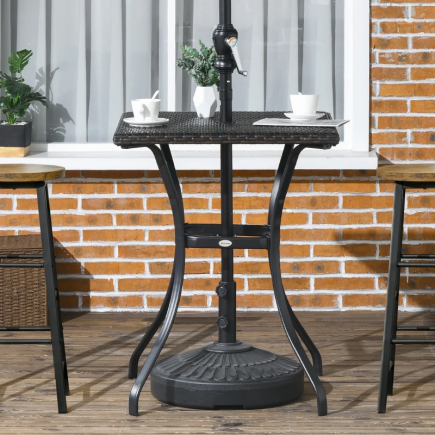When it comes to enhancing your outdoor space, a fire pit can truly transform your backyard into a warm and inviting retreat. Whether you’re hosting a family gathering or relaxing with a drink, a fire pit offers both warmth and ambiance. The choice between a gas fire pit and a wood fire pit is an important one, as each type has its own set of benefits, drawbacks, and unique experiences.

In this guide, we’ll explore the pros and cons of both gas and wood fire pits. We’ll compare factors like fuel types, maintenance, safety, environmental impact, and design, helping you decide which option is best for your needs.
Fuel Type and Availability
The type of fuel your fire pit uses has a direct impact on convenience, cost, and your overall experience.
Gas Fire Pits: The Convenience of Propane or Natural Gas
Gas fire pits are powered by either propane or natural gas. While the fuel type can vary, both options are easy to use and clean. Here’s a breakdown of the fuel types:
| Fuel Type | Pros | Cons |
| Propane | – Convenient and portable- Easily available at most retailers- No need for a gas line | – Requires regular tank refills- Higher operational cost over time |
| Natural Gas | – Lower operational cost in the long run- Direct connection to your home’s gas line- Consistent supply | – Requires gas line installation- Limited mobility (non-portable) |

Wood Fire Pits: Sourcing Firewood
Wood fire pits rely on traditional firewood, which can either be sourced locally or purchased. The availability and cost of firewood can vary depending on your location, and this can influence your ongoing expenses.
| Firewood Source | Pros | Cons |
| Locally Sourced | – Lower cost- Sustainable if harvested responsibly- Fresh and natural aroma | – Requires effort to gather, chop, and store wood- Space required for storage |
| Purchased | – Easy and convenient- Consistent supply- No need to store wood | – Ongoing costs- May not be as sustainable as locally sourced wood |

Ease of Use and Maintenance
When deciding between a gas and wood fire pit, think about how much time you’re willing to spend on lighting and maintaining your fire.
Gas Fire Pits: One-Button Ignition and Low Maintenance
Gas fire pits are designed for convenience. With a simple push of a button or a turn of a knob, you can have a fire going in seconds. There is no mess from ashes or soot, and when you’re done, simply turn off the gas. The only maintenance involves checking the gas line and ensuring the ignition system works properly.

Wood Fire Pits: More Hands-On Maintenance
Wood fire pits require more effort. First, you need to gather or purchase firewood and store it properly. Lighting a fire often requires kindling and matches or a fire starter. Once the fire burns down, you’ll need to deal with the ashes, which need to be cleaned out regularly. Wood fire pits also require more maintenance, such as checking for rust or damage.
| Aspect | Gas Fire Pit | Wood Fire Pit |
| Ignition | Simple one-button ignition | Requires kindling and effort to start |
| Clean-up | No mess, just turn off the gas | Requires cleaning of ashes and soot |
| Ongoing Maintenance | Minimal (occasional gas line check) | Regular wood storage and cleanup needed |
Safety Considerations and Regulations
Safety is crucial when choosing a fire pit. Both gas and wood fire pits come with safety considerations, but gas fire pits tend to be more controlled.
Gas Fire Pits: Safe and Controlled
Gas fire pits are considered safer than wood fire pits. They have controllable flames that can be adjusted with ease, and since there are no flying embers or sparks, there’s less risk of fire hazards. Most gas fire pits come with automatic shut-off features, which further reduce safety concerns.
Wood Fire Pits: Risk of Sparks and Flying Embers
Wood fire pits are more prone to sparks and flying embers, especially in dry conditions or windy weather. This can create fire hazards, particularly when you’re in close proximity to dry vegetation or furniture. Additionally, some areas have strict burn bans during certain seasons, limiting the use of wood fire pits.

| Safety Aspect | Gas Fire Pits | Wood Fire Pits |
| Flame Control | Easily adjustable flames | Flames can be difficult to control |
| Risk of Embers | No sparks or embers | Risk of flying sparks and embers |
| Safety Features | Often include automatic shut-off features | No automatic shut-off, requires monitoring |
Environmental Impact
Considering the environmental impact of your fire pit can help you make a more eco-friendly choice.
Gas Fire Pits: Cleaner and Eco-Friendly
Gas fire pits burn cleaner than wood-burning fire pits. They produce fewer pollutants and no smoke, making them a better option for reducing your carbon footprint. Additionally, Gas Fire Pits do not contribute to deforestation or other environmental concerns associated with wood harvesting.
Wood Fire Pits: Pollutants and Smoke
Wood fire pits, while offering a traditional experience, produce smoke, carbon dioxide, and particulate matter. These pollutants can affect air quality, especially in urban areas or during dry seasons when burn bans are common. Additionally, the harvesting of firewood can contribute to environmental degradation if not sustainably sourced.
| Environmental Factor | Gas Fire Pits | Wood Fire Pits |
| Emissions | Low emissions, no smoke | Produces smoke, carbon dioxide, and particulate matter |
| Sustainability | No deforestation or environmental impact | Can contribute to deforestation if wood is unsustainably sourced |
Heat Output: Which Fire Pit Will Keep You Warmer?
The heat output of a fire pit is one of the most important considerations, especially if you live in a colder climate.
Wood Fire Pits: Intense Heat for Colder Climates
Wood fire pits generally produce more intense heat due to the larger flames and the nature of the burning wood. This makes them ideal for colder climates or for those who want a fire that can heat a larger area. The heat is radiant and can warm you up quickly even on chilly nights.
Gas Fire Pits: Consistent but Less Intense Heat
Gas fire pits provide consistent heat, but it is typically less intense than that from a wood fire pit. This makes them suitable for moderate climates but less effective at heating larger areas or keeping you warm during colder weather.
| Heat Output | Gas Fire Pits | Wood Fire Pits |
| Heat Intensity | Moderate, steady heat | High-intensity heat, ideal for cold weather |
| Heating Range | Best for small to medium areas | Best for larger areas and extreme cold |
Wood Fire Pits: Traditional and Cozy
Wood fire pits offer a nostalgic, traditional experience. The crackling sound, the smell of burning wood, and the unpredictable dance of the flames create an authentic outdoor fire experience. For many, this is the quintessential fire pit experience, offering a warm, cozy atmosphere.
Gas Fire Pits: Clean, Modern, and Controlled
Gas fire pits provide a more modern, sleek look with steady, controlled flames. There’s little to no smoke, which can make the experience more comfortable for some people. While the ambiance may not feel as rustic, gas fire pits still create a beautiful and serene atmosphere.
| Aspect | Gas Fire Pits | Wood Fire Pits |
| Sound | No crackling, steady flame | Crackling wood adds a nostalgic experience |
| Smell | No burning smell, minimal smoke | Smoky aroma from burning wood |
| Visual Appeal | Clean and modern design, steady flame | Traditional, unpredictable flames with a rustic charm |

Cost Considerations
Finally, the cost is often a deciding factor. Here’s a comparison of initial and ongoing costs for both fire pit types.
| Cost Factor | Gas Fire Pits | Wood Fire Pits |
| Initial Cost | Higher due to installation and materials | Lower initial cost, more affordable basic models |
| Fuel Costs | Ongoing cost for propane or natural gas refills | Ongoing cost for firewood |
| Maintenance | Low maintenance, occasional gas line checks | Requires regular wood storage, ash removal, and cleaning |
Ultimately, the choice between a gas fire pit and a wood fire pit depends on your preferences and needs. If you value convenience, safety, and a modern look, a gas fire pit might be the best option. However, if you want a traditional, rustic experience with the added benefit of cooking over an open flame, a wood fire pit could be the perfect choice.
For a wide range of Fire Pits, from sleek gas models to rustic wood options, visit Aosom and find the perfect match for your outdoor space today.
FAQs
1. Is a wood or gas fire pit better?
Gas fire pits are more energy-efficient and produce far fewer emissions than wood, especially natural gas. They offer a cleaner, low-smoke burn compared to traditional wood-burning options.
2. What are the downsides of a propane fire pit?
Propane fire pits require tank storage and regular replacements, and fuel costs can be higher than natural gas. They may also produce smaller flames than wood-burning fire pits.
3. Are gas fire pits worth it?
Yes, gas fire pits are a great low-maintenance option that offer warmth and ambiance without the smoke or cleanup of wood-burning models.
























